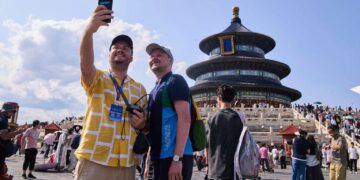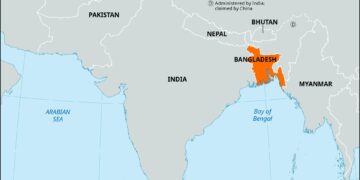– What are some of the most common natural disasters that have struck Bangladesh?
Uncovering the Devastation: The Toll of Carnage in Bangladesh
The country of Bangladesh has been plagued by carnage and devastation in recent years, leaving a trail of destruction in its wake. From natural disasters to man-made crises, the toll of carnage in Bangladesh has been staggering. In this article, we will delve into some of the most pressing issues facing this South Asian nation, shedding light on the challenges it faces and the resilience of its people in the face of adversity.
Natural Disasters: A Never-Ending Battle
Bangladesh is no stranger to natural disasters. Situated in a geographically vulnerable location, the country is prone to cyclones, floods, and other environmental hazards. The powerful cyclones that often hit the coastal areas of Bangladesh can wreak havoc on homes, infrastructure, and livelihoods. The 1991 cyclone killed an estimated 138,000 people, making it one of the deadliest natural disasters in the country’s history.
In addition to cyclones, Bangladesh also faces frequent flooding, particularly during the monsoon season. The overflowing rivers can submerge vast swathes of land, displacing millions of people and destroying crops. The 2007 floods, for example, affected over 9 million people and caused extensive damage to homes and infrastructure.
Man-Made Crises: The Garment Industry Tragedies
In addition to natural disasters, Bangladesh has also been rocked by man-made crises, most notably in the garment industry. The Rana Plaza collapse in 2013, which killed over 1,100 people and injured thousands more, brought international attention to the unsafe working conditions in Bangladesh’s factories.
The garment industry is a crucial part of Bangladesh’s economy, accounting for the majority of its exports. However, the industry’s rapid growth has come at a cost, with many workers subjected to long hours, low pay, and unsafe working conditions.
The Rana Plaza tragedy served as a wake-up call, prompting calls for improved safety standards and labor rights in the garment industry. While progress has been made in recent years, much work remains to be done to ensure the safety and well-being of factory workers in Bangladesh.
The Human Cost: Lives Lost and Families Torn Apart
Behind the statistics and headlines lie the human stories of lives lost and families torn apart by carnage in Bangladesh. The victims of natural disasters and man-made tragedies are more than just numbers – they are mothers, fathers, children, and friends whose lives have been forever changed by the events that have unfolded in their country.
The toll of carnage in Bangladesh is not just measured in terms of infrastructure damage or economic losses. It is also a toll on the mental and emotional well-being of those who have experienced trauma and loss. The psychological impact of disasters can be long-lasting, affecting individuals and communities for years to come.
Moving Forward: Resilience and Hope
Despite the challenges it faces, Bangladesh is a country of resilience and hope. From rebuilding after a cyclone to advocating for safer working conditions, the people of Bangladesh have shown remarkable strength in the face of adversity.
International support and solidarity have also played a crucial role in helping Bangladesh recover from disasters and improve living conditions for its citizens. Organizations such as the United Nations and non-governmental organizations have provided much-needed assistance in times of crisis, offering aid and resources to those in need.
As Bangladesh continues to navigate the challenges of carnage and devastation, one thing remains clear: the spirit of its people cannot be broken. With resilience, determination, and a commitment to building a better future, Bangladesh is poised to overcome the toll of carnage and emerge stronger than ever before.
the toll of carnage in Bangladesh is a complex and multifaceted issue that requires attention and action from both local and international stakeholders. By shedding light on the challenges faced by the country and highlighting the resilience of its people, we can work towards a brighter and more prosperous future for Bangladesh and its citizens.
The Tragic Consequences of Violent Protests in Dhaka
On the evening of July 19, Tahir Zaman Priyo tragically lost his life to a gunshot just behind Labaid Hospital in Dhaka’s Dhanmondi. The chaotic scene included street protests and the relentless firing of teargas shells and sound grenades, causing panic among bystanders. Priyo, a journalist, fell victim to the violence along with many others as law enforcement officers closed in from all sides.
A recent analysis conducted by The Daily Star revealed that out of 204 victims involved in the clashes surrounding the quota movement, 95 percent succumbed to gunshot wounds. These injuries were inflicted by live rounds, rubber bullets, and shotgun pellets. Shockingly, 113 individuals were fatally shot with live rounds targeting critical areas such as the head, chest, stomach, and abdomen.
Even a single gunshot wound to these vital organs can lead to death within minutes. Moreover, some victims were hit by pellets or rubber bullets while others sustained injuries that could not be definitively categorized due to lack of information provided by their families.
Tragically, among the casualties were 43 students and 32 children under eighteen years old—highlighting how even young lives were not spared during this turmoil. UNICEF reported that 32 children lost their lives as well.
In an effort to shed light on these tragic events and honor those who perished during the violence throughout various regions of Bangladesh over one week’s time frame—all pertinent details about 204 victims have been compiled. It was discovered through intimate conversations with family members and close friends that most individuals suffered fatal gunshots aimed at their heads or torso region—a clear indicator that lethal force was used deliberately rather than for crowd control purposes.
Experts consulted regarding ballistic patterns confirmed that shootings directed at essential areas like these are intended for fatal outcomes rather than dispersal tactics—a stark violation of ethical rules governing engagements during civilian protests.
International organizations such as the UN Human Rights Council along with Amnesty International and Human Rights Watch have condemned these egregious violations committed by law enforcement officials resulting in numerous deaths among primarily unarmed civilians.In one heart-wrenching incident early on impacted Abu Sayed—an ambitious student at Begum Rokeya University—who stood defiantly before police forces only armed with a mere stick; he too fell victim multiple times—fatally wounded—in front
of his peers who witnessed his untimely demise.
Examining data related to fatalities reveals troubling trends where victims predominantly suffered targeted gunshots inflicting severe damage above waist level:39 victims struck fatally on their heads35 shots taken directly at chests11 wounds inflicted upon stomachs8 abdominal injuries noted8 reported back injuries2 neck traumasReciprocal incidents demonstrated ten other individuals faced death after enduring critical leg/arms ro other bodily regions impacted4 incidents observed headshot-afflicted persons inside homes likely stray-bullet affectedThe harsh reality is unmasked through standpoint views illustrating mismanagement consequences resultant from inadequate top-down directives coupled loose adherence oversight underscored domestic regulatory policies culminating unnecessary tragedies.dh straw drawn uncertain no assurance reflected deployment counteractions safeguard citizen rights secure transparent governance norms uphold system resilience protect fundamental civil liberties pivotal effectiveness responsive mitigatory stratgd prevailing lint situational dynamics shaping adversarial posturing balance strengthen tendency involving stipulate emergent situational bleeding risk factors impose controlling measures enforce proactive preparedness drills grounding respect principles defining lawful execution practices adherents conformed compliant disciplines underscore commitment uphold rights protecting aspirations fundamental human dignity imperative mercy f golden touch grace selfless dedication valuing nurturing ethos virtues aiming erection abstract necessity assailing bridging divides fostering wholesome equilibriumselfodiv h dgtn r dhs act essfn vtrtipeutrnfllsdpctthvgressftltgreta f invnc ting peef f pac mdeglde ctdnlnhf sctrressgpovrntlcrfsndesiting inst inspired w fcstfetcodeigersard actgence ac hwagaite coratesturegrae crcure gudshidlmdencmmenda itpregufandhu sofdesrms prtecn astio act uporeaie frhtcodu fammrhcranacmsisnre ndtmpnsbingurgiveb girgfocrat omintyprsist iutitymgoldBGB Deployment and Shootings During Protests in Bangladesh
Following the deployment of the Border Guard Bangladesh (BGB) alongside various law enforcement agencies such as police, Rab, Ansar, riot police, Armed Police Battalion, and SWAT (Special Weapons and Tactics) members, violence escalated during recent protests in Bangladesh.
Initially deployed on a small scale on July 17 in six districts, at least 229 platoons of BGB were dispatched across the country the following day. Despite efforts to contain the violence by calling in armed forces on July 19 amidst quota protests that had grown into a larger movement involving thousands of people, fatal shootings continued.
Questions arose regarding the legality of opening fire on protesters without a written government order empowering law enforcement to shoot at sight. Brig Gen (retd) Sakhawat Hossain mentioned that specific circumstances must be outlined for forces to engage in shooting at sight under such orders – however, no official written order was found despite claims made by Awami League General Secretary Obaidul Quader regarding a “shoot-at-sight” directive.
Discussions also emerged regarding use-of-force guidelines and rules of engagement for security forces during protests. Concerns were raised about fatalities resulting from gunshots to vital parts of the body or fired from close range using rubber bullets that led to multiple deaths.
International human rights norms related to proportionate use of force for law enforcement were highlighted as being violated when unarmed protesters are targeted or when indiscriminate firing is employed during demonstrations as observed in Bangladesh. Meenakshi Ganguly from Human Rights Watch’s Asia Division emphasized adherence to these standards by security forces.
The types of firearms used during these events included automatic and semi-automatic rifles along with handguns such as Chinese AK47s, BD-08 Type 81 assault rifles manufactured locally in Bangladesh, semi-automatic 7.62mm Type 56 assault rifles among others according to photos and videos captured by media personnel present at the scene.
The tragic loss endured by individuals like Naima Sultana should serve as a reminder of the human toll taken during these incidents where young lives are cut short due to violent confrontations between authorities and protesters.Impact of Lethal Weapons Used on Protesters in Bangladesh
Uncovering the Use of Advanced Weapons
A team investigating the recent protests in Dhaka and beyond discovered a disturbing trend – law enforcement agencies and security forces wielding powerful firearms against protesters. With the help of two gun experts, our team identified various lethal weapons being used during these clashes.
Key Findings
In front of the Jatiya Press Club, Ansar members brandished AK47 guns and semi-automatic 7.62mm Type 56 assault rifles. The Border Guard Bangladesh (BGB) also carried “Chinese” AK47 assault rifles during confrontations at the same location.
The use of deadly weapons extended to other areas as well. In Khamarbari, Bangladesh infantry were seen with light machine guns, while Gazipur-made BD-08 Type 81 assault rifles made an appearance in Bijoy Sarani on another day.
The Severity of Casualties Corresponding with Weaponry
Interestingly, the days showcasing high casualties aligned with sightings of these lethal weapons. On July 19 alone, there were 62 fatalities attributed to fatal gunshots nationwide. The following day saw an additional 30 people succumbing to similar injuries.
Deploying Military Forces Against Civilians Raises Questions
Amidst escalating violence across Dhaka and neighboring regions like Jatrabari and its surroundings, questions arose regarding the deployment of military personnel armed with such potent firepower against unarmed protesters.
Fatalities Beyond Direct Confrontations
Tragically, not all victims were actively involved in protests; some were innocent bystanders caught in the crossfire. For instance, four-year-old Abdul Ahad from Jatrabari lost his life while merely observing the demonstrations unfold before him.
The broader impact was felt nationwide as reports emerged from over twenty districts detailing varying degrees of unrest and violence outside Dhaka. The blatant disregard for human life was evident as casualties mounted across different regions during this turbulent period in Bangladesh’s recent history.
Moving Forward towards Accountability
As investigations continue into these events that shook Bangladesh to its core, demands for accountability grow louder from various quarters demanding justice for those who lost their lives or suffered irreparable harm amidst this chaos.The Tragic Loss of Lives in Recent Civil Unrest
Shocking incidents of violence have led to numerous casualties in recent protests in Bangladesh. One such heartbreaking case involved a young student who was just enjoying the view from his balcony when tragedy struck and a bullet fatally wounded him. Another victim, Goni Mia, met a similar fate while simply parking his rickshaw in a garage in Mohakhali.
While many individuals lost their lives due to gunshot wounds, there were also cases of fatal beatings and even hacking. The range of victims spanned from as young as four years old to as old as sixty, representing diverse professions and backgrounds. Among the deceased, around 50 were from low-income backgrounds, 26 were employed in private sector jobs, and 21 were involved in various trade or business activities.
The scale of these tragedies reflects a disturbing trend of excessive force used by Bangladeshi authorities against protesters. Amnesty International has condemned this brutality, highlighting the blatant disregard for human rights and the failure of law enforcement officials to uphold their obligations under both national and international laws.
It is important to note that the list of victims provided here is based on information available until August 1st and may not be exhaustive due to logistical challenges in documenting every fatality during this tumultuous period. For example, despite witnessing an individual with gunshot wounds at a clinic in Rampura, efforts to verify his identity through morgues proved unsuccessful, resulting in his exclusion from official records.
These tragic events serve as a stark reminder of the human cost associated with civil unrest and underscore the importance of respecting fundamental rights amidst societal tensions.















